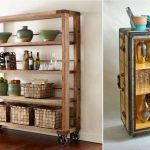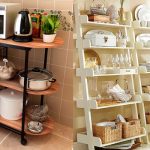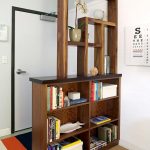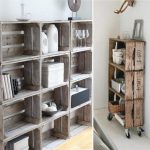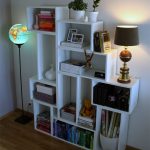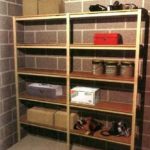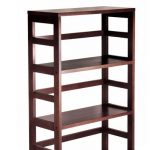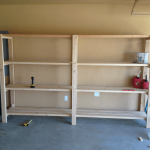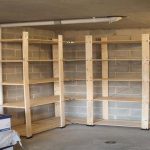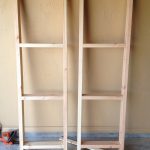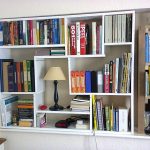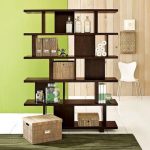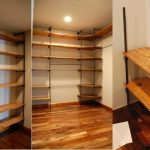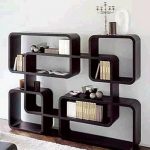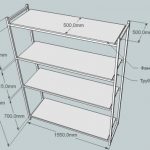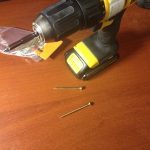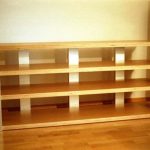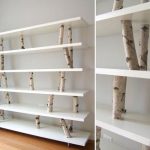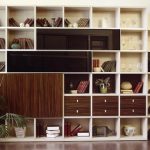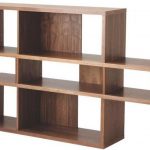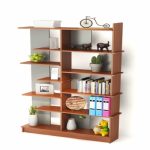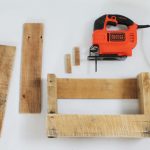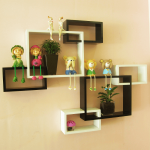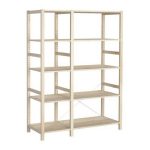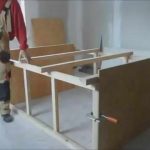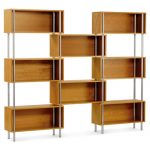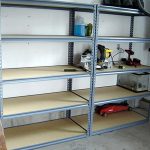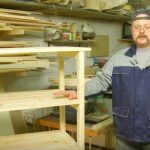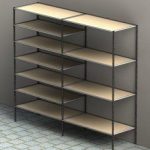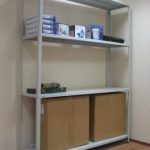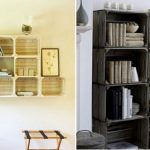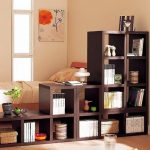 How to make a shelf for flowers on the windowsill
How to make a shelf for flowers on the windowsill
Making a convenient rack with your own hands
Preparing tools for shelving Most likely, you just do not have enough shelves to store many useful things. Canning jars and ready-made blanks for the winter, electric and hand tools, household chemicals ... the safer the owners, the longer this list. A simple conclusion suggests itself: in order to use living space more rationally, a rack is needed.
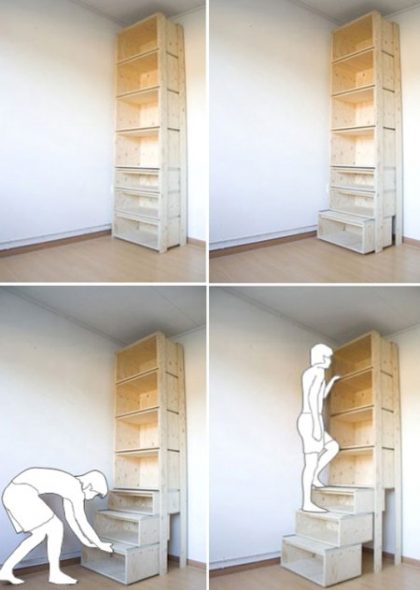
To make rational use of living space, you need a rack.
The stores offer a fairly wide range of shelving, but to get a piece of furniture that will fully meet your needs, it is better to make a rack with your own hands. Why?
- Only in this way you can organically enter a new piece of furniture in the interior.
- Self-made wooden shelves will be able to withstand the load necessary for your things.
- Having calculated the height of the shelves and the whole structure, you will be able to allocate a place for both large-sized objects and for small things.
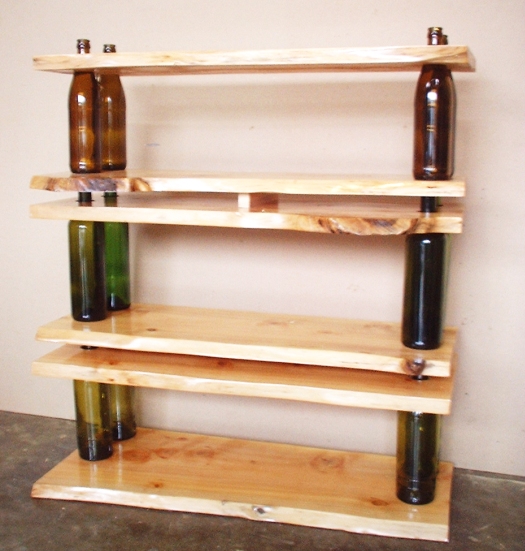
The stores offer a fairly wide range of shelving, but to get a piece of furniture that will fully meet your needs, it is better to make a rack with your own hands.
How to make a rack with your own hands? It is not as difficult as it seems. To make it, you will need available materials and simple tools.
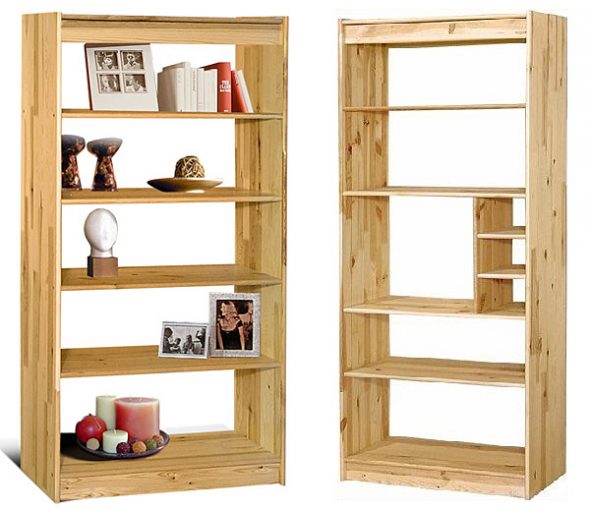
Self-made wooden shelves will be able to withstand the load necessary for your things.
STAGE 1. DEFINED WITH DESIGN
The choice of shelving design and requirements for its appearance depend primarily on the room in which it will be. Most often the racks do:
- in the hallway or corridor,
- in the pantry,
- on the balcony or in the loggia,
- under the stairs (this is true when it comes to a country house or a two-story apartment),
- in the basement,
- in the garage.
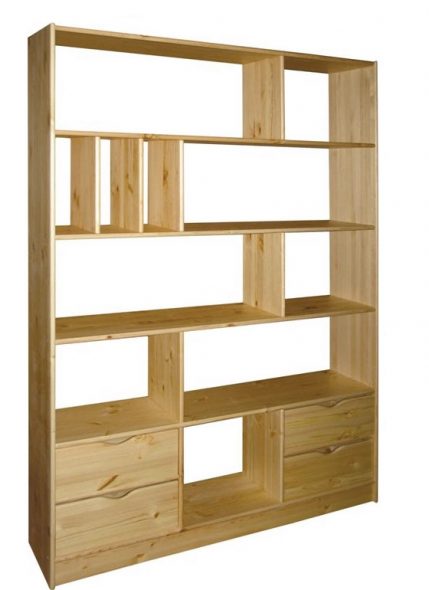
Having calculated the height of the shelves and the whole structure, you will be able to allocate a place for both large-sized objects and for small things.
Recently, shelves are increasingly being installed in residential areas, mainly in classrooms and children's rooms: these designs allow efficient use of space, and with a skillful approach they also decorate the interior.
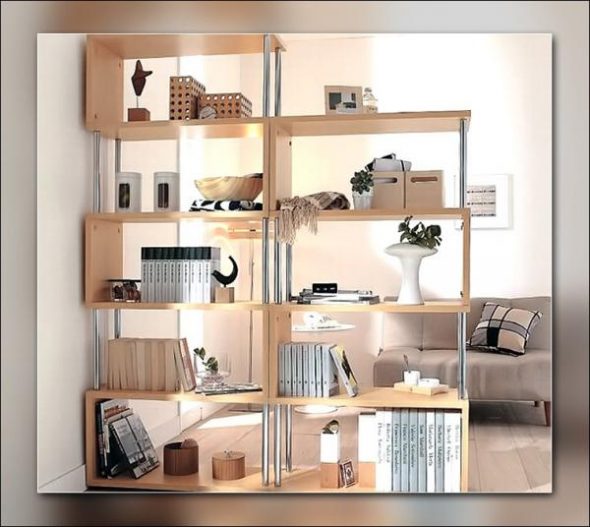
To make it, you will need available materials and simple tools.
There are several types of racks: frame, beam, modular, cantilever, rope; racks free-carrying and bridge circuit.
In the frame racks, the supporting structure is a wooden or metal frame, on which several shelves are mounted. For the rack with your own hands this is the most acceptable option.
Beam racks are similar in design, but have a more durable framework, they are more difficult to manufacture and require more expensive materials.
Modular shelving consists of three main elements: lattice, box and ladder. Their various combinations allow you to create products of the most unusual forms that can be attached to the wall or stand separately.

The choice of shelving design and requirements for its appearance depend primarily on the room in which it will be.
Console rack involves mounting the shelves to a solid rear wall in the absence of sidewalls. Such racks are convenient to use in the hallway.
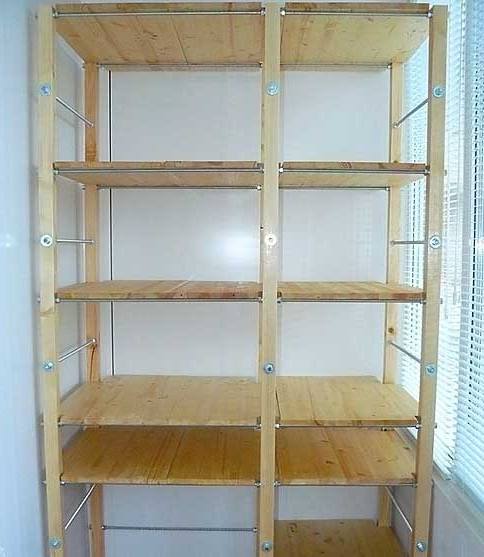
The supporting structures of the racks of the bridge circuit are A-shaped, inside of which there are fastenings for shelves, which are often used as boards.
The rope rack is similar in construction to a similar ladder: ropes are used to fasten shelves, and there are no side walls. Such a rack can be a spectacular detail of the interior in a nautical style (for example, in the children's room). A rope rack will not be suitable for storing items with a large weight, but souvenirs and favorite toys will look great on it.
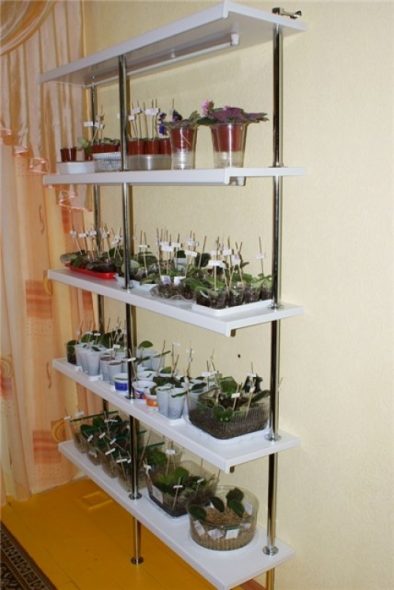
Since at home it is easiest to make a frame shelving, we will focus on the features of its design.
The racks of the free-carrying structure, because of their complex broken shape, are rarely created by craftsmen. They can not bear heavy loads and perform more decorative functions.
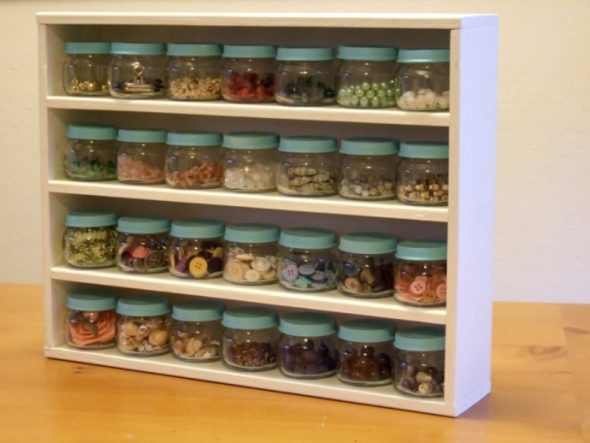
At the design stage, you need to take into account the height of the room (usually the rack is made up to the ceiling), and also decide what length and width of the shelves will suit you.
The supporting structures of the racks of the bridge circuit are A-shaped, inside of which there are fastenings for shelves, which are often used as boards. Making a rack-bridge is not very difficult, but the useful area of such a product is relatively small, and aesthetic qualities are controversial, so they are often used for production premises than in everyday life.
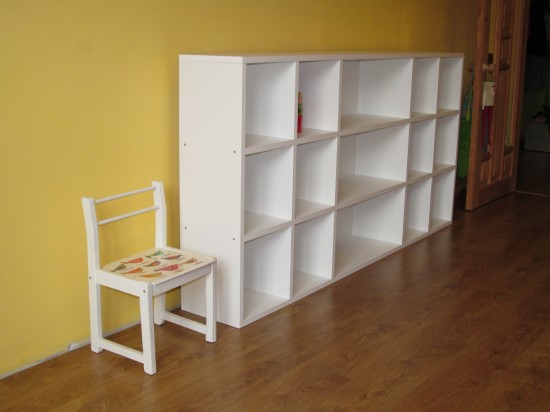
It is necessary to know the dimensions of the items to be stored: this will allow you to specify the depth of the product and select the optimal pitch of the racks.
Since at home it is easiest to make a frame shelving, we will focus on the features of its design.
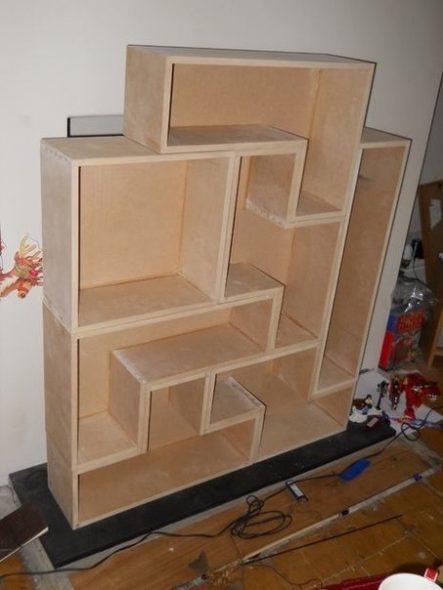
Long shelves can only be used to store light items, otherwise the deflection can not be avoided.
STAGE 2. CREATING SKETCH
At the design stage, you need to take into account the height of the room (usually the rack is made up to the ceiling), and also decide what length and width of the shelves will suit you. The markings on the wall greatly simplify the work on the sketch.
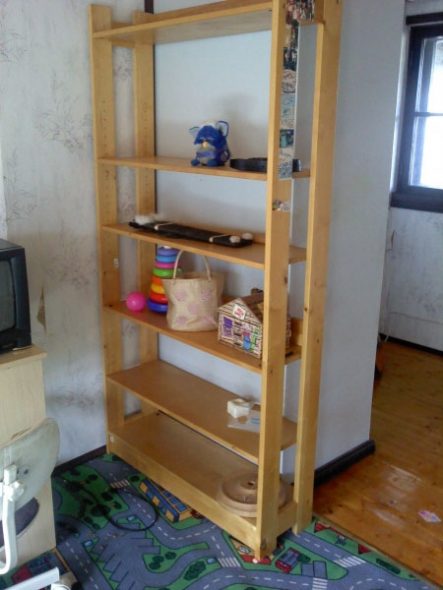
To make things easy to get, between them it is necessary to provide gaps (length 5-10 cm).
It is necessary to know the dimensions of the items to be stored: this will allow you to specify the depth of the product and select the optimal pitch of the racks. The maximum length of the shelves of the rack should be no more than 150 cm, and the material for them is usually boards. Long shelves can only be used to store light items, otherwise the deflection can not be avoided. If the wooden rack has to withstand heavy loads, the step of the struts of the structure should not exceed 50 cm. To make things easy to get, there should be gaps between them (length 5-10 cm). The width of the shelves for canned goods, books and other small items is 20-30 cm. The storage of power tools may require much more space, so you need to perform measurements.
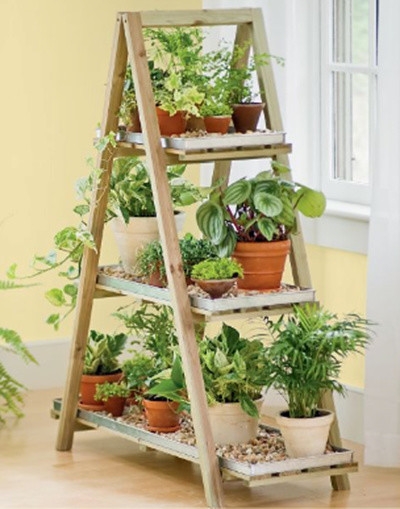
The racks of the free-carrying structure, because of their complex broken shape, are rarely created by craftsmen.
When designing the rack, it is necessary to take into account the distribution of the load and the number of shelves (the lighter and smaller the item, the higher it should stand, respectively, the lower frame should be strengthened).
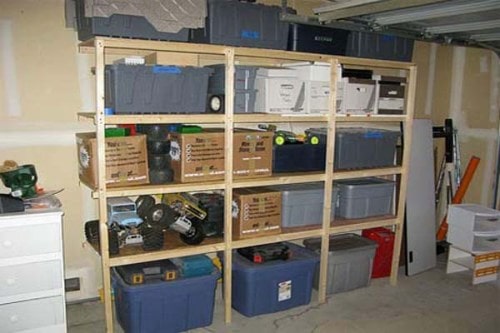
The storage of power tools may require much more space, so measurements must be taken.
The choice of materials depends on the temperature and humidity in the room. Wood is able to withstand heavy weight, but is sensitive to moisture, so it will be the best solution for living rooms. If the humidity is high (for example, in the basement) or temperature drops are possible (in an unheated workshop or in a garage), materials such as metal or plastic are better suited to the frame. The length of the shelves in this case can be up to 80 cm.
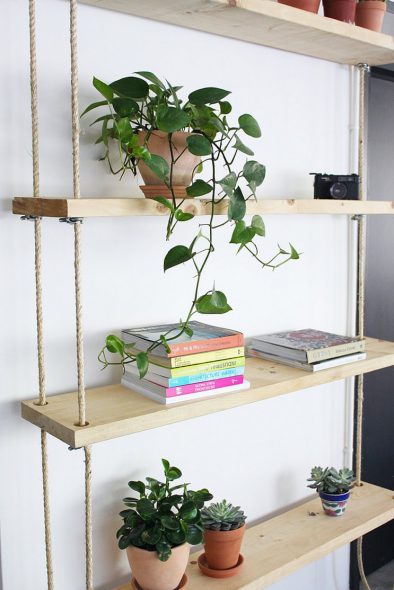
The rope rack is similar in construction to a similar ladder: ropes are used to fasten shelves, and there are no side walls.
For the manufacture of the rack will require the following materials:
- timber or perforated profile for racks;
- rail or corrugated solid profile for frames;
- Chipboard, OSB or shelf boards;
- screws, dowels and metal corners for installation.

When designing the rack, it is necessary to take into account the distribution of the load and the number of shelves (the lighter and smaller the item, the higher it should stand, respectively, the lower frame should be strengthened).
If all the preliminary measurements have been made and the materials have been selected, it’s time to draw a sketch.
The height of the shelves should be the same or decrease from bottom to top, which allows you to rationally distribute the load.
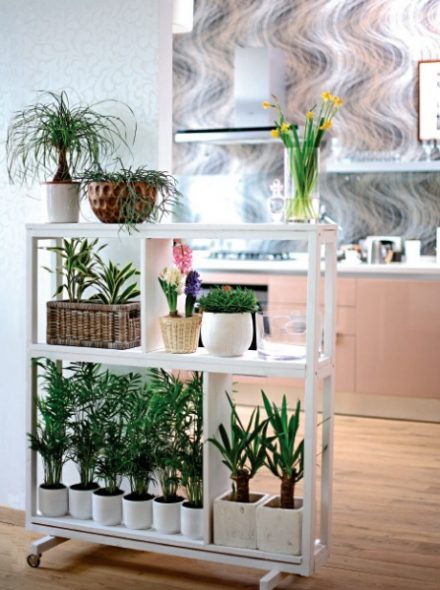
Their various combinations allow you to create products of the most unusual forms that can be attached to the wall or stand separately.
The simplest rack consists of vertical bars (sometimes they make solid walls) and shelves. For greater stability, a frame construction is used when chipboard plates are attached to the bars on the screws on the top and bottom. Since the heaviest objects are always at the bottom, the lower frame should be reinforced with transverse bars.
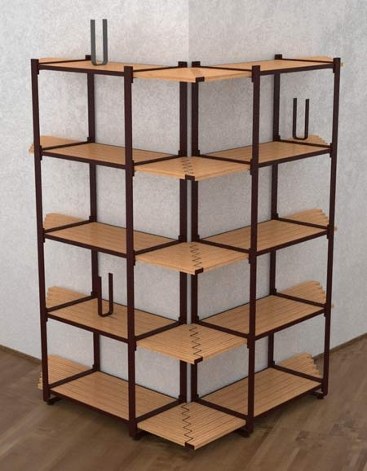
The choice of materials depends on the temperature and humidity in the room.
STAGE 3. MOUNT RACK
To make your own rack, You will need tools that are available in almost every home:
- saw or jigsaw,
- drill,
- screwdriver.
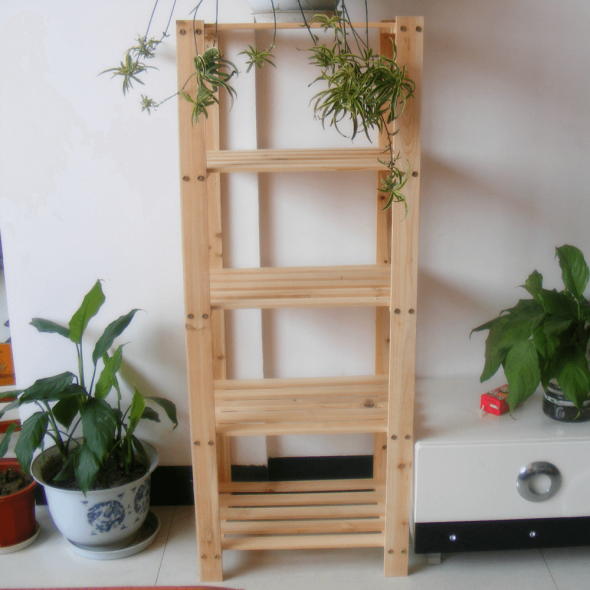
Modular shelving consists of three main elements: lattice, box and ladder.
The process of manufacturing a rack consists of only a few operations.
- Cut the timber for racks and planks for crossbars. Be careful, the length of the same parts must be exactly the same.
- On a horizontal surface we connect the pillars with the crossbars, mark the attachment points with chalk. Drill holes with a drill of the desired size and use a screwdriver to connect the construction details using self-tapping screws.
- With the help of metal plates fasten the resulting frame to the wall of the room (and, if possible, also to the ceiling and floor).
- To achieve maximum structural strength, on the shelves you need to choose the folds (if you do not have a milling machine, it is better to make to order). Next, we carry out the installation of shelves: fasten them to the frame on the screws.
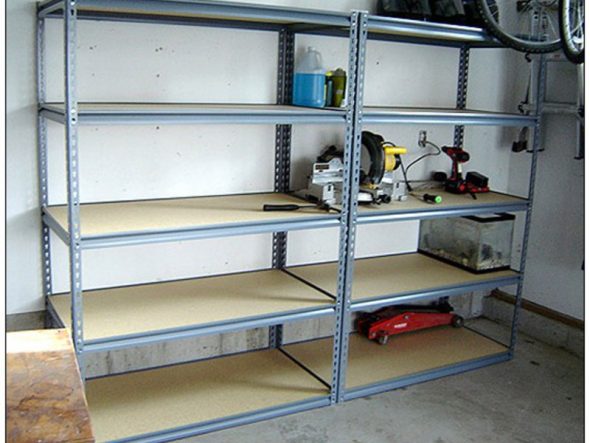
Beam racks are similar in design, but have a more durable framework, they are more difficult to manufacture and require more expensive materials.
To assemble a metal profile frame, you need the same tools, but you also need metal drills and latches. To protect the structure from skewing, X-shaped ties should be made of a thin metal profile. Installation of shelves is carried out on screws at the final stage of work.

Wood is able to withstand heavy weight, but is sensitive to moisture, so it will be the best solution for living rooms.
You can use a lightweight version of the metal structure: fix the metal brackets to the wall with dowels, and make shelves from the top by cutting boards or chipboard. This option will require the least time: only about an hour. In this way, you will not get a frame shelving, but a kind of console, the length of the shelves in it can vary.
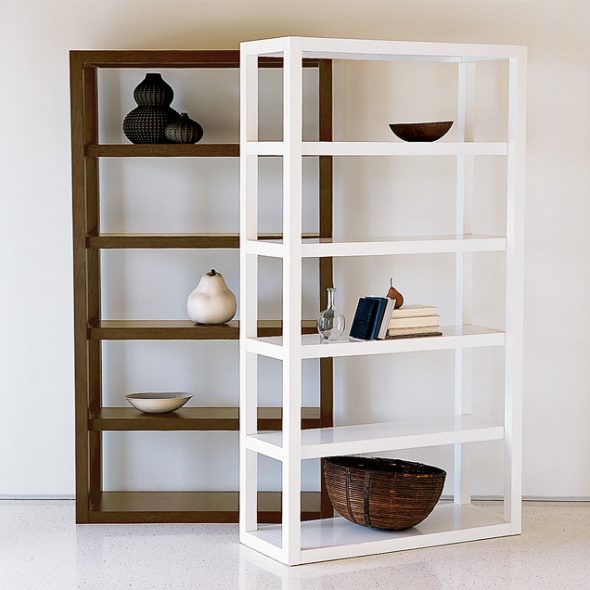
In the frame racks, the supporting structure is a wooden or metal frame, on which several shelves are mounted.
FINAL STAGE: DECORING
If your rack is made of metal, its decor is reduced to painting, for which only alkyd paint applied using an airbrush is used.
For the decor of chipboard shelves you will need a melamine edge (sold as rolls in many hardware stores). The process of finishing the ends of the shelves consists of several simple operations:
- cut the edge into pieces along the length of the ends;
- grind the ends of the shelves with fine-grained emery paper;
- carefully remove the dust with a damp cloth or cloth;
- hot iron press melamine edge to the ends of the shelves.
As a result, hand-made shelves look as neat as those bought in a store.
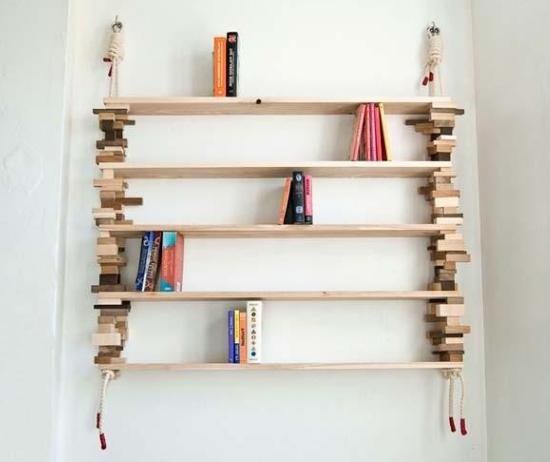
There are several types of racks: frame, beam, modular, cantilever, rope; racks free-carrying and bridge circuit.
Wooden shelving gives you more room for decoration. You will need inexpensive materials and simple tools: acrylic paint, varnish, sandpaper, wax-polish. Before assembling the rack on wood racks and shelves, you can apply stain, which will allow to achieve a shade suitable for the interior and emphasize the tree structure. Racks or side walls can be decorated with stencils, or you can embed images you like on acrylic lacquer. At the finish, the rack can be covered with furniture wax, which will give a soft sheen and will protect your rack from moisture.
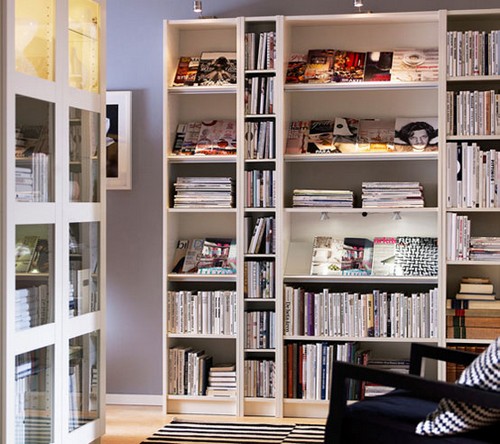
If you did everything right - now your things are always in place, no more scattered books and canned foods forgotten on the balcony: everything is at hand, and in the house there is order and comfort!
If you did everything right - now your things are always in place, no more scattered books and canned foods forgotten on the balcony: everything is at hand, and in the house there is order and comfort!
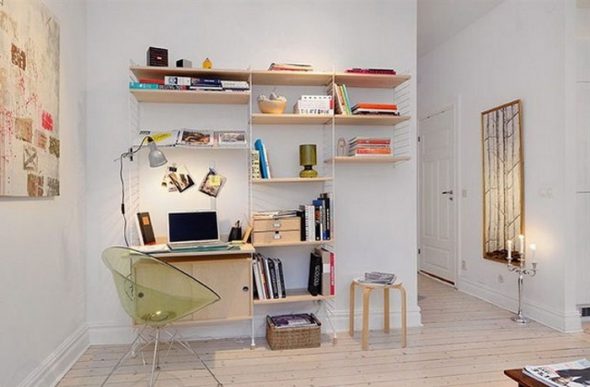
Recently, shelves are increasingly being installed in residential premises, mainly in classrooms and children's rooms.
VIDEO:Rack DIY
50 photo design ideas for a do-it-yourself rack
 How to make a shelf for flowers on the windowsill
How to make a shelf for flowers on the windowsill
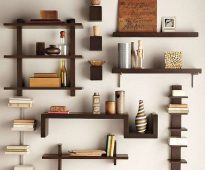 How to hang a shelf on the wall? Very easy!
How to hang a shelf on the wall? Very easy!
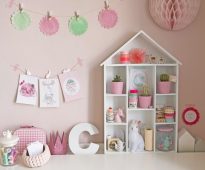 Shelf "house" - a convenient and original idea for the nursery
Shelf "house" - a convenient and original idea for the nursery
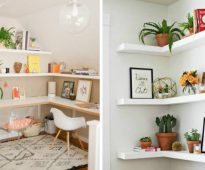 Corner shelf do it yourself
Corner shelf do it yourself
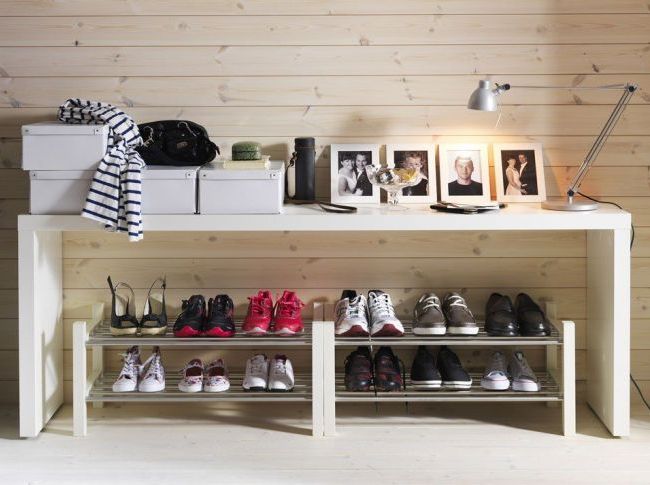 Making shoebox for the hallway with your own hands.
Making shoebox for the hallway with your own hands.
 We make flower shelves with your own hands. What you need to know?
We make flower shelves with your own hands. What you need to know?

